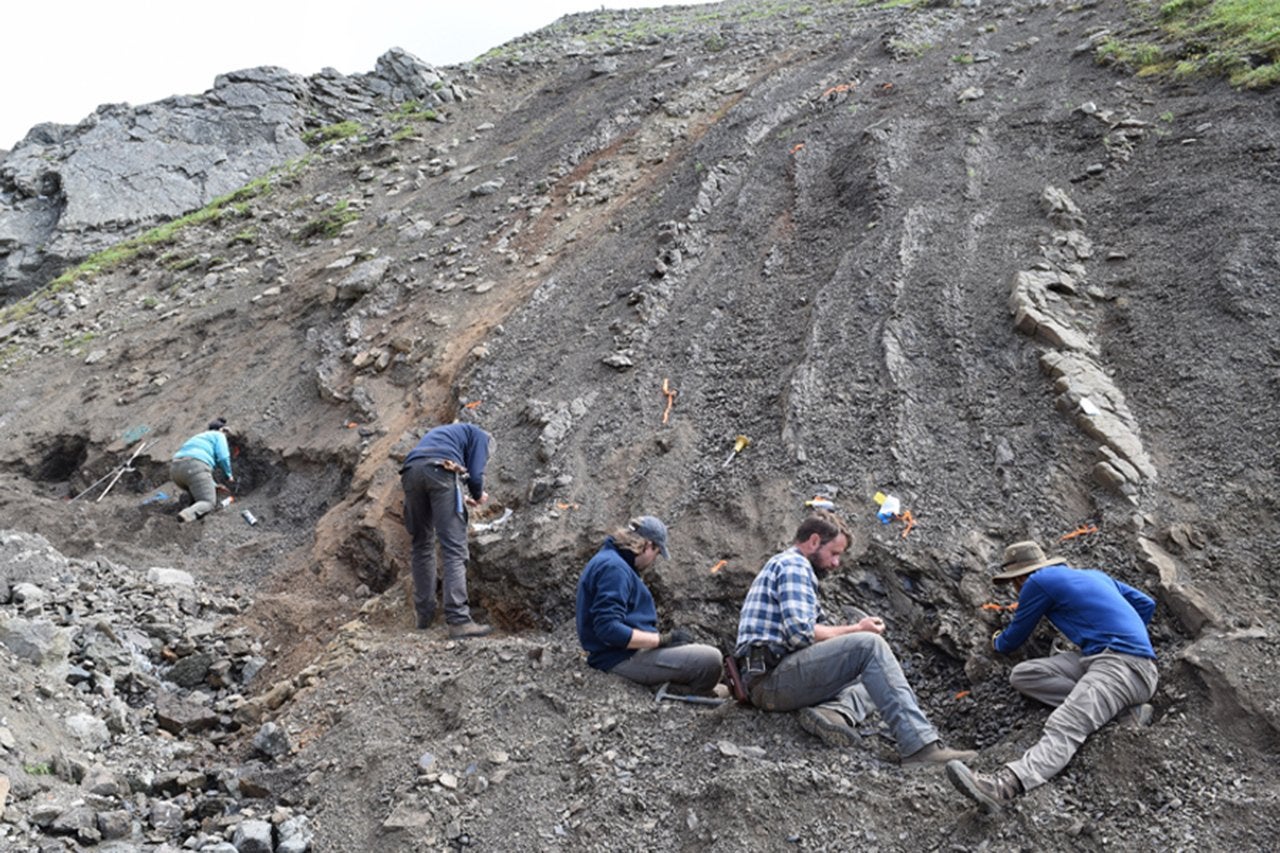Above: Researchers collecting samples in Alberta, Canada. (Photos by Ben Gill)
The theory that the age of dinosaurs came to an end 66 million years ago when a meteor the size of a mountain crashed into the Earth off Mexico’s Yucatán Peninsula is common knowledge.

Teddy Them and his colleague, Andrew Caruthers of Western Michigan University, collect fossils at a site in the Canadian Rocky Mountains.
But not many people are aware that another mass extinction – in which 90% of ocean species perished – preceded it by 117 million years. Now we may know why. New research, conducted in part by College of Charleston assistant professor of geology Teddy Them, shows that a decline in the element molybdenum may have played a role. Many photosynthetic marine organisms rely on the trace metal for survival, but its abundance decreases as oceans lose oxygen and bury more carbon.
The findings, recently published in AGU Advances, indicate that there was much more carbon cycling through the ocean than previously thought, perhaps on a scale of today’s human-induced levels, causing a significant variation in marine oxygen contents and elemental cycles.
“It is clear from this study (and studies of other time intervals) that large fluctuations in the amount of oxygen in the oceans can have profound and negative consequences for marine organisms and ecosystem structures,” says Them, who began this research project while a postdoctoral fellow at Florida State University and the National High Magnetic Field Laboratory. “This specific time interval is associated with both oxygen loss and enhanced carbon burial, which led to the drawdown in the amount of molybdenum in the oceans on a global scale.”
The researchers found new estimates for the start of the molybdenum drawdown (and deoxygenation), which preceded the start of the main phase of the extinction by about 1 million years and lasted around 2 million years, are much longer than scientists had previously calculated. The researchers also suggest that enhanced volcanic activity occurred over a much longer time period, which fueled the longer duration of environmental change by continuing to inject climate-altering gases into the atmosphere.
And just like 183 million years ago, more and more carbon dioxide is being added to the Earth’s system today.
“Our oceans are currently losing oxygen due to the effects of anthropogenic climate change and other feedbacks in the Earth system,” says Them. “We can use the results from this research and from other time intervals that are also associated with marine deoxygenation, trace metal drawdown and extinction to better predict how life will respond in the oceans as they continue to lose oxygen. This has the potential to help drive conservation efforts in specific regions of the world’s oceans that may be more susceptible to oxygen loss and ecosystem destabilization.”




